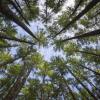 INSTITUTE FOR NATURAL RESOURCES
INSTITUTE FOR NATURAL RESOURCESYou are here
TOPICS
all
Developing regional solutions from Cascade Head to Cape Perpetua to provide adequate water supplies for water systems and local industry, while providing adequate flows and water quality for fish, wildlife, and our environment.
Developing regional solutions from Cascade Head to Cape Perpetua to provide adequate water supplies for water systems and local industry, while providing adequate flows and water quality for fish, wildlife, and our environment.
Developing regional solutions from Cascade Head to Cape Perpetua to provide adequate water supplies for water systems and local industry, while providing adequate flows and water quality for fish, wildlife, and our environment.
Developing regional solutions from Cascade Head to Cape Perpetua to provide adequate water supplies for water systems and local industry, while providing adequate flows and water quality for fish, wildlife, and our environment.

A natural area is land managed for scientific research and education that contains important biological or physical attributes. In Oregon, these lands are established under the Natural Areas Act.

Oak Creek descends nearly 2000 feet from its timbered headwaters through residential, farm and conservation lands, into the urban reach in Corvallis and its confluence with the Marys River. The Network exists to care for this special place where we live, work and play.

Oak Creek descends nearly 2000 feet from its timbered headwaters through residential, farm and conservation lands, into the urban reach in Corvallis and its confluence with the Marys River. The Network exists to care for this special place where we live, work and play.

Over the past 250 years, rapid growth in fossil fuel burning and land use changes have caused a dramatic rise in CO2; emissions. As a result the average acidity of the surface ocean has increased about 30% since 1750.

Oregon’s diverse plants include over 3,300 species of flowering plants, 35 species of conifers, and many ferns, mosses and liverworts; plus diverse seaweeds and algae.

Private lands is a legal designation of the ownership of property by non-governmental entities.

Public land includes government-owned land such national parks and forest, wildlife refuges, grazing lands and virtually any land or site to which the public may have access.

Information about race and ethnicity show the diversity of communities and the extent of isolation experienced by various groups.
Increased renewable energy development in Oregon is anticipated in the coming decades, particularly solar energy, wind energy, and associated transmission line development










